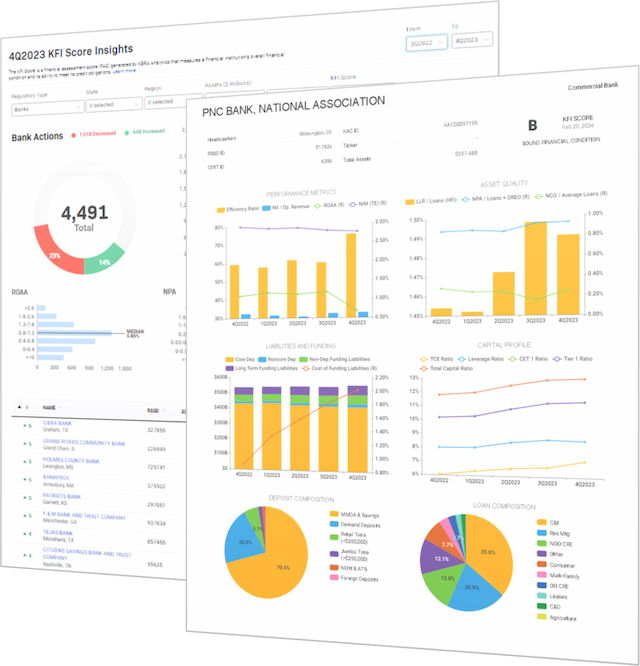KBRA Financial Intelligence
CRE Stress Climbs at Largest Banks
By KFI Staff
The biggest banks are reporting higher commercial real estate (CRE) delinquencies than their smaller peers. Overdue CRE loans have risen to 1.65%, up 37 basis points (bps) at banks with at least $100 billion in assets in Q3, while lenders below that asset threshold reported a delinquency rate of 0.59%, up 7 bps in the period, according to call report data compiled by KBRA Financial Intelligence (KFI). The delinquency rate includes loans at least 30 days past due and non-accrual loans. Properties where owners charge rent, or other nonfarm, nonresidential loans, are driving CRE stress. Delinquent loans in the subcategory climbed to $17.7 billion from $7.5 billion in the year-ago period. The largest banks are holding almost $13 billion in the overdue loans.
The biggest banks have more exposure to the struggling urban office market, while their smaller competitors are generally not big enough to lend to the large properties. With companies still employing flexible work-from-home schedules, office occupancy rates continue to hover at about 50% of pre-pandemic levels, according to Kastle Systems. Office loan stress is at a post-global financial crisis high with $26.3 billion in conduit CMBS identified as KBRA Loans of Concern (K-LOC), KBRA Credit Profile’s primary metric to identify loans that are in default or at heightened risk of default. Delinquencies are likely to keep moving higher for office properties, according to Andrew Gibbs, senior vice president at Mercer Capital. The sector has been hit by a “double whammy” of lower revenue from office properties and higher expenses from interest, taxes, and insurance, he said. KFI Subscribers can run the above analysis with the Peer Comparison CRE Composition and Delinquency Analysis Excel file found in the template library.
Q3 KFI Score Moves More banks had their KFI Scores lowered than increased in Q3 2023, with 441 scores falling versus 348 rising. The new KFI Insights tool enables users to search for the biggest KFI Score movers by region, state, and bank asset size. For example:
MidCountry Bank, which has $1.07 billion in assets and is based in Bloomington, Minnesota, saw its KFI Score fall five levels to D from B, due to declining asset quality.
Ciera Bank, a $926 million asset lender near Dallas, had its KFI Score climb two levels to B+ from B-, in part due to an improvement in its Tier 1 capital ratio.
Recent Mergers First Busey Corp., the holding company for Busey Bank (KFI Score: B+), agreed on November 27 to buy Merchants and Manufacturers Bank (KFI Score: B) an approximately $42 million deal. The transaction, which is expected to close in Q2 2024, would give Champaign, Illinois-based Busey about $12.7 billion in assets. The $7.7 billion Michigan State University Federal Credit Union (KFI Score: B+) agreed on November 13 to merge with Gabriels Community Credit Union (KFI Score: A) with its $32.1 million in assets. The transaction is expected to close this year. First Financial Corp. (KFI Score: B) in Terre Haute, Indiana, agreed on November 13 to buy the $702 million asset lender SimplyBank (KFI Score: B) for about $73.4 million. First Financial picks up 13 branches in a deal expected to close in Q2 2024.
Follow Van Hesser’s Podcast and Insights Follow KBRA’s weekly podcast and newsletter 3 Things in Credit, hosted by our Chief Strategist, Van Hesser. From the November 17 episode: “The soft-landing narrative has quickly become consensus, and risk assets have ripped; stocks up 9% off of recent lows, and high yield spreads in 50 bps. Oh, and the 10-Year has gone from piercing 5% to blowing through 4.5%. In 30+ years of doing this, I don’t know if I have ever seen such a pivot.”
